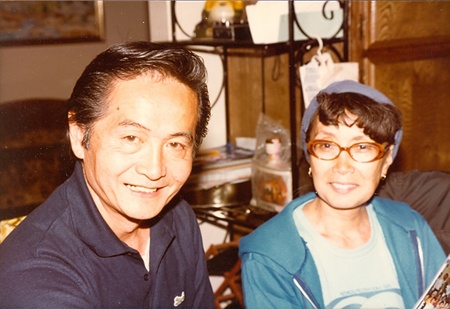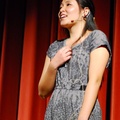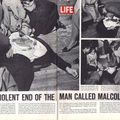Read Part 1 >>
Her life drastically changed the day Japan bombed Pearl Harbor, December 7, 1941. In President Franklin D. Roosevelt’s infamous words, “a date which will live in infamy.”
From that point, she started to question her cultural identity and how the government and the rest of America perceived her. “Before the war, I was seeing America with American eyes. What happened to Japanese Americans after Pearl Harbor made me see the world and America with entirely new eyes—Japanese American eyes. In many ways, this marked the beginning of my political awakening and development.” (Kochiyama 2004, xxiii)
That very morning, when Yuri answered a knock on the door, three FBI officials thrust themselves into her house and seized her father, Seiichi. In complete shock, she didn’t even get a chance to ask the FBI officials where they were taking him.
After numerous phone calls, a lawyer finally called back to tell them Seiichi had been taken to the Federal Penitentiary on Terminal Island where he was being held prisoner, most likely interrogated and mistreated. He had undergone surgery for diabetes treatment and a stomach ulcer just a few days before and was in dire need of medication. When Yuri’s mother, Tsuya, tried to visit him and deliver Seiichi his medicine, the officials refused to administer it, so his health quickly deteriorated in prison. He died the day after he was released.
After Roosevelt signed Executive Order 9066 on February 19, 1942, 120,000 people of Japanese ancestry were removed from their homes and sent to ten incarceration camps, which were euphemistically called relocation centers by the government.
Yuri, her mother, and Art were sent to the Santa Anita Assembly Center, a former racetrack, where they were “housed” in horse stalls that were made into barracks, the smell of manure infiltrating through the floor and where their makeshift curtains offered little privacy among their neighbors. The internees waited in long lines for everything from the bathrooms, to the mess halls for food, to the showers. It was the first time she had ever lived in a barrack or eaten in a mess hall.
Here, Yuri worked as a Sunday school teacher and formed a group called the Crusaders, who wrote letters to bolster the spirits and show support for Nisei soldiers fighting overseas. She also chose to work as a nurse’s aid, a job she thoroughly enjoyed. In her own words, “we washed all the patients, we fed the elderly patients, we took care of little kids, fed them.”
Her family was eventually incarcerated at Camp Jerome, a swampland surrounded by forest in Arkansas, in which life was very similar to Santa Anita.

Yuri with her Sunday School kids in Camp Jerome. Gift of Yuri Kochiyama, Japanese American National Museum (96.42.6)
Amidst this isolation and unwavering uncertainty of release, though they lived in dingy, cramped barracks, the Japanese Americans tried to make the most out of their situation and made furniture from what pieces of wood lied around, planted flowers to brighten up the landscape, and sewed bed sheets, tablecloths, and curtains to improve what little privacy they had.
Yuri said that, “we learned soon enough that our strongest weapons to sustain ourselves were teamwork, a cooperative spirit, ingenuity, and concern for others” (Fujino 2005, 57).
One of the things that came out of this camp experience for Yuri was that she began to learn more about her Japanese American community and identify herself as Japanese American. “I feel like going to camp actually is where for the first time I came to know my own people…I was really proud to be Japanese” (Fujino 2005, 59).
What Yuri felt echoed many of the same thoughts as other second generation Japanese Americans who had grown up “All-American” and did not identify themselves with their Japanese heritage. Feeling betrayed by their country, some Nisei started to learn more about their Japanese culture and embrace their Japanese identity, even opting to “return” to Japan, a country that they had never even seen.
In the middle of incarceration and war, Yuri found her silver lining when she met a handsome, charismatic Nisei soldier, the love of her life and husband to be, Bill Kochiyama. At the time, a member of the all-Japanese American combat team, the 442nd Regiment, Bill was training at Camp Shelby, Mississippi, but soon shipped overseas to fight in Europe.
The 442nd Regimental Combat Team “became known as the Purple Heart Regiment because of the number of casualties sustained in combat, and they returned home as the most distinguished and decorated army unit of its size in the history of the U.S. Army” (Kochiyama 2004, 31).
After the war, on New Year’s Day, 1946, after Yuri had returned back to her home in San Pedro upon her family’s release from Jerome, Bill was honorably discharged and arrived in New York, where Yuri quickly caught a bus to meet him. They were happily married and soon after, started a family.
© 2011 Maya Kochiyama






